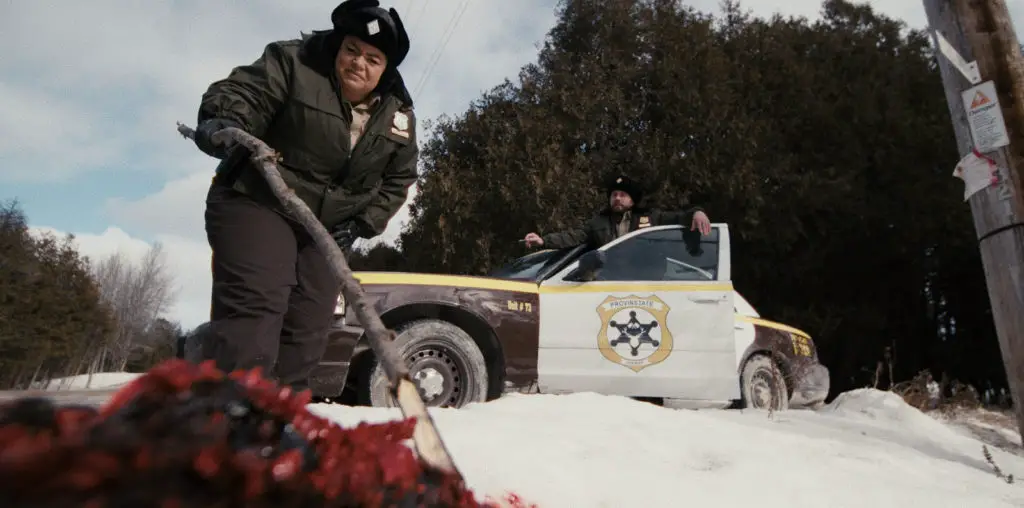
In my last entry I talked about how I decided to get started making documentaries. It basically boiled down to; I was too inexperienced and insecure to make a narrative short or feature, my time was limited (or better, I needed to make it in a time frame that was logical to my job schedule) and I had an interest in the “strange but true” world of documentary filmmaking. I found a person who shared my interest in the same subject matter, we borrowed some equipment from my school and headed off to San Francisco each night to film “Stringers.”
If you’ve never heard of the term “stringer” it refers to a freelance journalist who isn’t an official employee of a newspaper, TV station or news agency, but does freelance work. The guys we focused on were these freelance videographers who would rig their cars with 3-4 police scanners and spend each night driving around waiting and hoping for a fire, accident, bomb threat or murder. When these things would happen, these guys would race to the scene, film the action and then sell the footage to local TV station. Pretty much anytime you see news footage on TV without a stations reporter standing there reporting, the footage was gathered by a stringer. So John and I tagged along with these guys and it was brutal. We both worked 9-5 jobs, came home and grabbed dinner, hung with our girlfriends for an hour and then drove an hour to San Francisco to then drive around with some truly odd people until about 4-5 in the morning. It sucked.
Granted, this was the gig and we both knew it was going to be a grind but man, talk about a true graveyard shift. We began to think like the stringers, hoping for the worst to happen and getting frustrated when it didn’t. This caused an even more stressful situation related to our story or rather, what we thought the story would be. Both John and I figured “Stringers” would plot itself. We’d hang with these guys and interview them throughout the night then when all hell broke loose and they would race to a crime scene or fire, we’d film that. Then we’d capture them selling the footage to a TV station, interview the folks there and boom, we’d have our film and the audience would experience a night in the life of a person with a job they never knew existed. One problem: Nothing happened the entire time we were shooting the doc.
We were shooting “Stringers” in October and November of 2001 which was just after the 9/11 attacks. As you may remember, everyone in society was on their best behavior for those few months and we never saw anything major unfold for our doc. Further, the stringers themselves were getting grumpy and desperate because they weren’t selling anything. Our best laid plans for a documentary that would be intriguing, intense and compelling was starting to unravel before our eyes. We stuck it out with 3 different stringers over the course of a few months then we all started getting sick of one another so we just called it a wrap. Our job as filmmakers now became finding a new story because the one we thought we’d have simply didn’t happen. And thus the rub for making a documentary; you never really know what you’re going to get when you start filming. Sure, you can manipulate things, ask leading questions or try to coerce your subjects into enticing scenes, but I don’t want to make films like that as it feels dishonest to viewers.
As we started logging footage we hoped and prayed a story would unfold and slowly, it did. While we never caught any hardcore stringers in action, we began to notice a through line of competition and shady behavior on behalf of the stringers. It seemed one guy had found a way to beat out other stingers by phoning TV stations and saying he had footage before he had it. In the past, you got the footage, phoned the station and then came down and sold it. Someone had changed the game and people were pissed. Suddenly, we had our story and set-up a few more interviews to help get at the heart of this issue. This was a much easier situation because rather than just letting things unfold, we could specifically ask about a situation and be done rather quickly. In fact the follow-up interviews took about 2 nights and just like that, we had our film. The next question became, just how long do we make this thing?? Several points-of-view figured into this decision and I’ll cover that in the next entry.
Got questions? The floor is open and I’d love to also do some question and answer entries so if you have anything you want to know, feel free to email me at UglyDogDoc[at]gmail.com
Also, please contribute to our new film at http://www.indiegogo.com/The-Ugly-Dog-Doc
